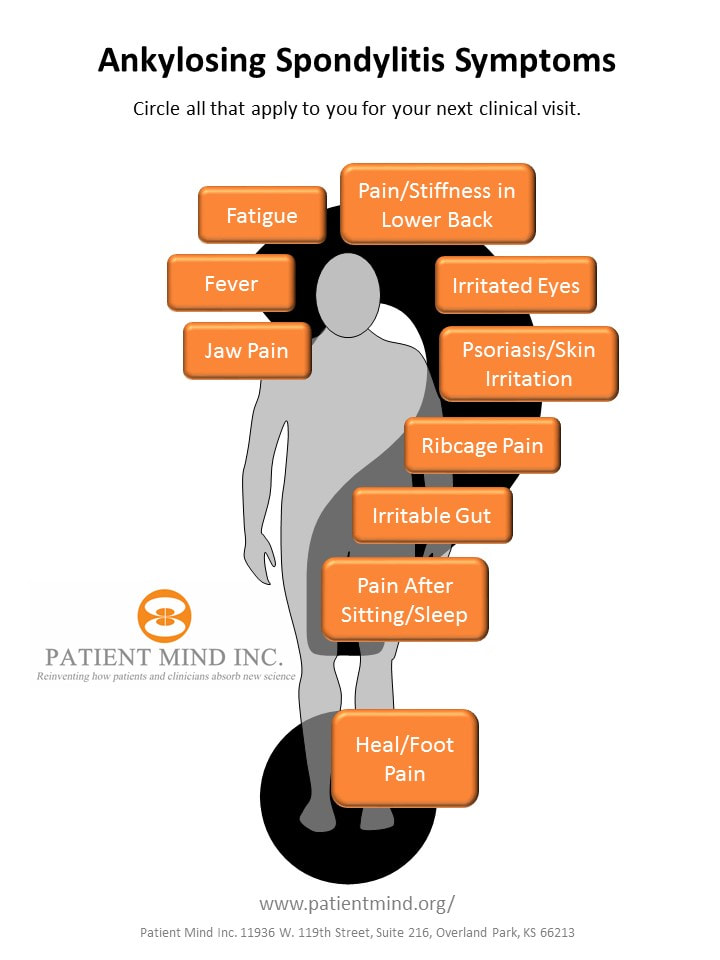Ankylosing spondylitis
Ankylosing spondylitis (AS) is pronounced (pronounced ank-kih-low-sing spon-dill-eye-tiss). AS is a chronic inflammatory disease of axial joints (first and second cervical vertebrae of the spine), especially sacroiliac (links of the pelvis and lower spine). In other words it is an inflammatory disease that, over time, can cause some of the small bones in your spine (vertebrae) to fuse (join) in an attempt to heal itself. This fusing makes the spine less flexible and can result in a hunching posture and other symptoms described below.
SymptomsAS is more common in men, although it does occur in women. Signs and symptoms typically begin in early adulthood.
Symptoms of AS tend to come and go. They include pain and stiffness in your lower back, hips, and neck. Causes AS is potentially caused by a combination of genetics (HLA-B27), environment, and diet. Risk factors Things that may increase the risk of AS are gender (male), age (20-40), specific genes (HLA-B27), infections, lack of exercise, and poor diet. Clinical Features Along with pain and stiffness, overtime AS can cause restricted lung capacity and function, inflammation of the eyes, and heart function. Clinical features include low back pain that gets progressively worse. Reactive bone formation may be seen. Calcification of posterior longitudinal ligament is seen. In later stages spine appears fused with fixed kyphosis (Bamboo spine). Complications can include uveitis (eye inflammation), aortitis (aorta inflammation-the largest artery in the body), amyloidosis (abnormal protien builds in tissues and organs). |
Click here to find a specialist in your area.
